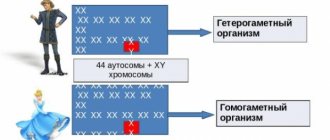Vomiting in a child at night always worries parents a lot. After all, the little one had been sleeping peacefully before and did not show any concern. Before taking any action, it is necessary to determine what could have caused this condition. When, in addition to nausea and vomiting, watery diarrhea begins and the body temperature rises, the cause most likely lies in an intestinal infection. But there are a number of other conditions when only vomiting is observed and there are no other symptoms.
Causes of night vomiting
There are plenty of reasons for night vomiting in children; it can be difficult to immediately determine what triggered this condition. If vomiting appears in a dream, you need to immediately analyze what the baby ate shortly before sleep. Perhaps there was some new product in the diet that could cause an allergic reaction and the body tried to get rid of foreign substances. If a child’s vomiting during sleep is not accompanied by a rise in temperature, then the reasons include:
- There is a foreign body in the digestive tract. This is typical for young children, who often put small parts in their mouths during play.
- A cold with copious mucus production, which flows down the back wall of the larynx and provokes nausea and vomiting.
- Severe fatigue or stressful situation during the day. Parents need to remember how the little one spent his day.
- Inflammation of appendicitis. This condition is accompanied by a rise in temperature, lethargy and acute pain in the lower abdomen.
- The baby ate fatty and junk food in the evening. This could be smoked meats, barbecue, cakes with rich cream, chips or soda. It is advisable not to include all these products in the diet of young children, and chips with carbonated drinks are generally undesirable for children at any age.
If the cause of vomiting is poisoning, then the acetone content in the body usually rises. You can determine how much this indicator exceeds the norm using test strips, which should be in every home medicine cabinet.
If a child vomits, which is accompanied by pain in the lower abdomen, appendicitis can be suspected. In this case, the baby is lethargic, pale and very restless. If such a condition occurs, you must immediately call an ambulance.
Vomiting at night in a child: causes
Vomiting at night in a child has different causes. This symptom may indicate the presence of serious illnesses. In some cases, this symptom is a consequence of errors in the diet and is quickly corrected.
Vomiting is often preceded by nausea, which is painful and deprives the child of the opportunity to get proper sleep. If we are talking about very young children, they often become restless and cry. In this case, infants refuse to eat, and all attempts to feed them end in vomiting.
The danger of symptoms occurring at night is that if the child is sleeping soundly and the stomach suddenly empties, particles of vomit may enter the respiratory tract. This will provoke life-threatening consequences.
The reasons for these symptoms vary. If a child vomits in his sleep, then parents need to monitor his position. Wake him up in time or turn him on his side. Vomiting in a child should not be ignored. You must report such manifestations to your doctor so that he can prescribe the necessary diagnostic tests.
Why does a child vomit at night?
If a child vomits in his sleep, the most common reason is errors in diet. Either he overate or the food was of poor quality. The reasons may include intoxication from eating spoiled foods. Quite often, symptoms manifest themselves at night, when the digestive organs work in economy mode.
Vomiting in a child during sleep can signal serious disturbances in the gastrointestinal tract. The main ones:
- Cholecystitis. When secretions accumulate in the gallbladder, stagnation occurs. When bile accumulates in sufficient quantities, the need for emptying arises. The accumulated secretion causes severe vomiting, in which black flakes can be seen, indicating the presence of bile. In this case, the symptoms appear very often and are indomitable. Often accompanied by diarrhea.
- Pancreatitis. Inflammation of the pancreas often provokes enzyme deficiency. At the same time, food is digested poorly. As a result, the child vomits, which may be accompanied by painful sensations in the abdomen.
- Liver pathologies. In the presence of hepatitis or other diseases of this digestive organ, incomplete digestion occurs, since an insufficient amount of bile acids is released. Gastric emptying occurs quite often. Liver pathologies are also accompanied by the presence of a jaundiced tint of the skin and sclera.
- Gastritis. Atrophic and inflammatory processes in the stomach lead to motor disorders. As a result, food is retained in the organ, which provokes vomiting.
Diseases of the duodenum also contribute to this symptomatology in children. In this case, epigastric pain is often felt.
Additional factors
If a child has vomited more than once before bedtime, then this phenomenon will frighten every parent. There can be many reasons for such symptoms. And this does not always indicate diseases of the digestive system.
Vomiting at night can also occur due to psychological disorders. In this way, the child’s body reacts to some kind of stress that it experiences during the day. In this case, gastric emptying is accompanied by pale skin, cold sweat and frequent urination. With serious psychosomatic disorders, the child feels an incomprehensible fear.
Vomiting at night can be a consequence of a brain tumor that compresses a special center. This symptomatology is accompanied by severe headache and darkening of the eyes. The child becomes very restless and whiny.
An increase in intracranial pressure also provokes the appearance of similar symptoms. This makes it difficult for children to learn. They lag behind their peers, and at night gastric emptying occurs, which is provoked by changes in body position and pressure changes.
A common cause of vomiting may be a cough. When children are sick, mucus often accumulates in the nasopharynx. If a child has an increased gag reflex, then a normal cough can provoke this type of symptomatology.
ARVI, influenza, chickenpox and other infectious diseases often lead to such manifestations. Especially if the temperature is significantly elevated. This is how the child’s body reacts to intoxication.
When vomiting does not stop for a long time, this is a reason to consult a doctor. After all, such symptoms can lead to dehydration of the child’s body and may indicate intestinal obstruction. The cause of this pathological condition is helminths, which, with a significant accumulation, clog the lumen of the digestive organs, mainly the intestines.
Source: https://elaxsir.ru/simptomy/drugie/voznikayushhaya-rvota-nochyu-u-rebenka-prichiny.html
What can parents do?
Many parents are lost as soon as the baby starts vomiting and don’t know what to do. There is no need to panic; all actions should be clear and calm. If a child vomits at night without a rise in temperature, then the algorithm of action should be as follows:
- Calm the child, wash him and, if necessary, change his clothes. Replace bedding.
- Give your mouth a good rinse with clean water.
- Offer a drink. Water is given in small portions, but often.
- Temperature is measured.
- If the urge reoccurs, adsorbents are given and the baby is monitored.
When there is an increase in temperature above 38.5 degrees, it is necessary to give antipyretic tablets. It is best to give paracetamol, but ibuprofen will also work.
A single vomiting in a child at night indicates overwork or overeating. Most often, after such an incident, the child lies down calmly and sleeps. If the vomiting has become regular, then after each attack the baby is allowed to rinse his mouth, and then given a tablespoon of water. If vomiting is caused by rotavirus or poisoning, then the urge occurs every 15-20 minutes for the first hour, then gradually subsides.
You can add a little honey and a few drops of lemon juice to the baby's water. This drink not only tones and refreshes, but also supplies a weakened body with useful microelements.
What to pay attention to
If a child vomits before bed or at night, the child should immediately be calmed, changed and washed. Babies, when they are asleep, are frightened by such an unpleasant phenomenon and may begin to cry a lot. Parents should be nearby at all times; it is unacceptable to leave the little one alone, even for a few minutes.
The infant is held in the arms with a slight incline. Older children are placed on their sides in bed to avoid choking on vomit.
During vomiting, it is necessary to avoid dehydration, which occurs quite quickly in children. It must be remembered that the lower the baby’s weight, the more dangerous this condition is for him.
Dr. Komarovsky: what to do if a child is vomiting. Vomiting in a child at night
Vomiting is a protective mechanism, a reflexive eruption of stomach contents through the mouth (or nose). During an attack, the abdominal press contracts, the esophagus expands, the stomach itself relaxes and pushes everything that is in it down the esophagus.
This rather complex process regulates the vomiting center, which in all people is located in the medulla oblongata. Most often, vomit is a mixture of undigested food debris and gastric juice.
Sometimes they may contain impurities of pus or blood, bile.
The most common cause of childhood vomiting is food poisoning. Vomiting can be observed with various infectious diseases: rotavirus infection, scarlet fever, typhus.
Less commonly, this problem is caused by accumulated toxins; this condition can occur with serious kidney disease.
Other causes of vomiting include diseases of the stomach and intestines, neurological diagnoses, and head injuries.
In children, vomiting can often be provoked by severe emotional shocks.
Kinds
Doctors distinguish several types of infant vomiting:
- Cyclic vomiting (acetonemic).
- Renal.
- Hepatogenic.
- Diabetic.
- Cardiac.
- Psychogenic.
- Cerebral.
- Bloody.
In most cases, vomiting in children begins at night. The baby wakes up from severe nausea. In this situation, it is important not to be scared or confused. Parents' actions should be calm and confident.
The younger the child, the more dangerous vomiting is for him, since dehydration can occur, which can be fatal for children.
A single vomiting (without any additional symptoms) in a child should not cause much concern for parents, says Evgeny Komarovsky.
The fact is that this is how the body “cleanses” itself of accumulated toxins and food elements that the child could not digest.
However, parental inaction can be fraught with tragic consequences in cases where vomiting is repeated, as well as if there are other symptoms indicating disorders in the body.
The most common cause of vomiting in children is food poisoning. Poison can enter a baby’s body through various foods: dairy, meat, seafood, vegetables and fruits.
In the vast majority of cases, the gag reflex is caused by nitrates and pesticides used on fruits and vegetables. Even very high-quality meat products can cause severe poisoning if they are prepared incorrectly.
Evgeny Komarovsky emphasizes that the first symptoms of food poisoning usually begin to appear between 4 and 48 hours after eating. Quite often, you can stop vomiting caused by food on your own, at home.
At the first symptoms of poisoning, enteral detoxification with the enterosorbent Enterosgel must be used as first aid. After administration, Enterosgel moves through the gastrointestinal tract and, like a porous sponge, collects toxins and harmful bacteria.
Unlike other sorbents, which must be thoroughly diluted with water, Enterosgel is completely ready for use and is a delicate gel-like paste that does not injure the mucous membrane, but envelops and promotes its restoration.
This is important because poisoning is often accompanied by exacerbation of gastritis, which causes the lining of the stomach and intestines to become inflamed.
However, Evgeny Komarovsky reminds that there are situations in which mothers and fathers should not engage in independent healing. Medical attention is required:
- Children from 0 to 3 years old.
- Children who vomit due to elevated body temperature.
- Children who have vomiting, diarrhea and abdominal pain (all or just some of the symptoms) have lasted for more than two days.
- Children who are not “alone” in their illness (if other household members have similar symptoms
There are situations in which a child needs emergency medical attention as soon as possible. You should call an ambulance in one or more of the following conditions:
- Vomiting occurred after eating mushrooms.
- The vomiting is so intense that the baby cannot drink water.
- Vomiting is accompanied by clouding of consciousness, incoherent speech, poor coordination of movements, yellowing of the skin, dry mucous membranes, and the appearance of a rash.
- Vomiting is accompanied by visual enlargement (swelling) of the joints.
- Against the background of repeated vomiting, there is no urination for more than 6 hours, the urine has a dark tint.
- Vomit and (or) feces contain impurities of blood and pus.
While waiting for the doctor to arrive, the child should be placed on his side so that during the next vomiting attack the child does not choke on the vomit. The baby should be held in your arms, on its side. There is no need to give any medications.
In order for the doctor to quickly understand the true cause of the child’s condition, parents must remember in as much detail as possible what the baby ate over the last 24 hours, what he drank, where he was and what he did.
In addition, mom and dad will have to carefully examine the vomit in order to then tell the doctor about its color, consistency, whether there is an unusual smell, whether there are any impurities of blood or pus in it.
Analyzing color
Dark vomit (the color of coffee grounds) may indicate serious stomach problems, including peptic ulcers.
If there is an admixture of bile in the masses and there is a bitter-sweet smell, one may suspect a problem with the gallbladder and biliary tract.
The green color of the vomit may indicate the neurological nature of the reflex; vomiting also occurs in a severe stressful situation, when the child cannot cope with anxiety and emotions in any other way.
It is recommended to leave samples of vomit and feces of a sick child until the doctor arrives in order to show them to a specialist. This will facilitate the fastest and most accurate diagnosis of the true cause of the condition.
Vomiting in an infant may be a completely natural process of developing digestive functions, but it is better if it is diagnosed by a doctor. Komarovsky emphasizes that vomiting in infants is often a completely expected cause of banal overeating if parents are too zealous in their desire to feed their child more and more calories.
Vomiting can also be of another nature - allergic, traumatic, and also inflammatory. In other words, this reflex accompanies a great variety of different diseases, some of which require prompt hospitalization followed by surgical care, and therefore vomiting attacks should not be underestimated.
So, parents should make every effort not to stop vomiting at any cost and try to treat something with folk remedies, but to carefully observe. It will be just great if they can provide the following information to the doctor who comes to the call:
- Frequency and periodicity of attacks (at what intervals does vomiting occur, how long does it last).
- Does the child feel better after the next attack, does the abdominal pain decrease?
- What is the approximate volume of vomit, its color and whether there are any impurities.
- What has the baby been sick with over the past year, over the past two weeks?
- What did the baby eat, and do the parents suspect food poisoning?
- Has the child's weight changed over the past 2 weeks?
Vomiting in children under one year of age without fever
Sometimes a child may experience vomiting and nausea without fever or diarrhea. This may occur due to the following diseases:
- Gastroesophageal reflux. Vomit of small volume with a sour odor, starting immediately after feeding. The baby is restless, constantly cries and hiccups. To get rid of this disease, it is necessary to adjust the feeding time and amount of food, and also use drugs to prevent the release of hydrochloric acid. This disease is usually treated at home quite simply and leaves no consequences.
- Pyloric stenosis develops 2-3 days after birth and is characterized by a large amount of vomit, which comes out in a stream with great pressure a short period of time after feeding. The infant becomes dehydrated, loses weight, and has seizures. In this case, the only way to help is surgical intervention, which must be resorted to immediately.
- Pylorospasm - vomiting is not profuse. Feeding small amounts of food frequently and applying warm compresses to the stomach helps. If these measures fail, surgery is prescribed.
- Congenital esophageal diverticulum. The child vomits a small amount of formula or milk, and weight loss occurs. Only surgery will help here.
Reasons for calling an ambulance
Vomiting in a child without fever can be a sign of some serious illnesses, including those requiring immediate surgical intervention. Therefore, you should not delay seeking medical help and self-medicate.
You need to call an ambulance immediately if:
- vomiting occurs frequently and does not stop;
- it is not possible to give the child something to drink due to the frequent eruption of vomit;
- there are additional symptoms - high fever, diarrhea, abdominal pain;
- fainting, semi-fainting or, conversely, excessive excitability (crying, screaming, physical activity);
- severe abdominal pain combined with bloating and constipation;
- vomiting occurred after consuming products of dubious quality, chemical additives, medications;
- vomiting occurred after a head injury, fall, blow - an urgent examination by a neurologist is needed;
- lethargy, drowsiness, convulsions, and fever are observed.
If vomiting occurs once or twice, the stool is loose or normal, and the child drinks water normally, plays, and sleeps well, then it is not necessary to call an ambulance, but you should contact your local pediatrician.
Why did nausea and vomiting appear at night, reasons
The most common reasons for vomiting at night are food poisoning and diseases of the gastrointestinal tract.
In addition to the fact that poisoning causes the most unexpected disruptions to the body's functioning, its main symptom, vomiting, may indicate a number of other diseases, including those requiring surgical intervention.
Some diseases, in addition to vomiting, help to establish or exclude such secondary indicators as the color of stool and urine. For example, vomiting with severe diarrhea indicates a high probability of dysentery. This disease requires only medical intervention.
Source: https://pro-acne.ru/otravleniya/komarovskij-rvota-u-rebenka-chem-kormit-posle-rvoty-i-otravleniya-chto-delat.html
What not to do
When vomiting occurs only once in the evening or at night, you can help the child and put him to sleep. Wherein:
- do not self-medicate and give your baby any medications other than sorbents and antipyretics;
- do not leave the baby alone, even for a few minutes, without adult supervision;
- do not feed your toddler dairy products or juices;
- Do not let your child sleep in anticipation of the next bout of vomiting.
What to do in the morning
Sometimes it happens that the baby vomits once at night and in the morning does not remember anything at all. In this case, parents should provide the baby with enough fluids and adhere to a diet for a couple of days. You can give the following dishes:
- vegetable soups with a second chicken broth;
- porridge made from buckwheat, oatmeal or rice;
- mashed potatoes;
- steamed chicken balls;
- bread croutons;
- banana and applesauce.
Infants continue to be breastfed on demand, but no new foods are introduced into the diet for the next couple of days. Fruit jelly, which has an enveloping effect, is a good drink to drink. If nothing reminds you of the night incident for about two days, you don’t have to worry, it means the cause of the vomiting was not serious.
When your baby is still bothered by constant nausea and there is a cutting pain in the stomach, you need to consult a doctor. It is quite possible that there is a foreign body in the digestive tract that should be removed.
Every child experiences vomiting at night at least once. The cause most often is the use of harmful products. To prevent such a problem from happening, the child’s diet should consist only of natural and healthy foods.
Why does a child vomit at night?
Pediatrician Zinovieva N.A. 06/25/2015
Severe vomiting without diarrhea and fever can be a sign of a number of diseases: pathologies of the gastrointestinal tract (GIT) and inflammation of the digestive organs, neurological abnormalities, problems with the endocrine system, traumatic brain injuries. It is important in this situation to exclude cases of acute surgery - appendicitis and intestinal obstruction.
Vomiting is never an independent disease. It's always a symptom. It is usually accompanied by diarrhea and fever, or one of these two symptoms. These are characteristic signs of any intestinal infection, some viral diseases, toxic infections or chemical poisoning. What can vomiting in a child without fever and diarrhea indicate?
Main reasons
- Food poisoning and indigestion. Typically, with food poisoning, a child experiences vomiting and diarrhea without fever or with fever. However, with minor intoxication, only the stomach can react in the form of a single vomiting. This also happens with indigestion, overeating, or taking some kind of medication.
- Metabolic problems.
Most metabolic disorders are hereditary. First of all, it is diabetes. To diagnose metabolic problems, the doctor will recommend a blood test for hormones and enzymes, and an ultrasound of the digestive organs and kidneys. A child may have an individual intolerance to whole cow's milk, glucose, cereals, fruits and other products.Treatment in this case consists of eliminating unwanted foods from the diet.
- Neurological disorders and congenital pathologies. There is such a thing as cerebral vomiting. She indicates that the root cause is neurological abnormalities. They could appear during intrauterine development of the fetus, during birth trauma and asphyxia.
Congenital cerebral pathology and other abnormalities can provoke profuse vomiting or leakage of food from the esophagus. Vomiting is a characteristic symptom of concussion, traumatic brain injury, and brain tumors in children of any age. Associated symptoms: headaches, nausea, dizziness. Vomiting can also accompany migraines in children.Alas, this disease has recently become noticeably younger. Vomiting also often occurs with meningitis, encephalitis, and epilepsy.
- Intestinal obstruction, or intussusception.
It can be congenital or acquired, complete or partial. Occurs in newborns, children up to one year and older. It occurs when one part of the intestine does not contract and does not push stool towards the rectum. Along with vomiting, the child may experience cramping, sharp pain in the abdomen, weakness, pale skin, stool in the form of raspberry jelly streaked with mucus and blood. Intussusception is most often treated surgically. - Foreign body in the esophagus.
Such an emergency most often happens to children from one to three years old, who try to try everything “by tooth.” Characteristic symptoms: pain when swallowing, difficulty swallowing food, foamy formations in the throat, refusal to eat, restless behavior, crying, difficulty breathing due to a large foreign body.Signs may vary depending on the size of the object and in which part of the esophagus it is stuck. Vomiting is frequent and repeated, but does not bring relief. Prolonged presence of a foreign body in the esophagus is dangerous due to complications and can be life-threatening. Diagnosed using fluoroscopy.
- Acute appendicitis.
It occurs in extremely rare cases in infants. Children of preschool and school age complain of pain in the right side, in the navel area. Main symptoms: sharp pain, frequent bowel movements and urination, lack of appetite, repeated vomiting. A slight increase in temperature and diarrhea may occur. - Inflammation of the digestive organs.
These include stomach ulcers, gastritis, colitis, gastroduodenitis, pancreatitis, cholecystitis and other diseases. A common symptom of acute gastritis is repeated vomiting. The child may also have vomiting with diarrhea without fever. Vomit often contains an admixture of mucus and bile.Gastritis in children is provoked by diet, lifestyle, psycho-emotional state, complications after infectious diseases.
- Pyloric stenosis.
Congenital narrowing of the passage between the stomach and duodenum. This leads to food being retained in the stomach and pushed out under pressure. Symptoms of pyloric stenosis are detected during the first days of a newborn’s life. After each meal there is profuse vomiting. The child loses fluid and weight, which is life-threatening. Only surgical intervention in the early stages helps get rid of pyloric stenosis. - Pylorospasm.
The stomach and duodenum are separated by a valve called the pylorus. Under the influence of the hormone gastrin, the pyloric muscles are in good shape for about 4 months. With constant spasm, it becomes difficult for food to pass from the stomach to the intestines. Unlike pyloric stenosis, with pyloric spasm, vomiting is not as frequent and profuse.In case of this functional disorder, it is recommended to switch to specialized nutrition with a thick consistency - anti-reflux mixtures. If your baby is breastfed, your doctor may prescribe a small amount of formula before each breastfeeding. Antispasmodics may be prescribed from medications.
Good weight gain and general well-being of the baby indicate a favorable prognosis for pyloric spasm.
- Cardiospasm.
Impaired motor function of the esophagus. It expands greatly when food enters it. The lower esophageal sphincter (cardia) is narrowed and in good shape, which makes it impossible for food to move further into the stomach. Vomiting occurs during eating or immediately after eating, accompanied by a cough. The child may complain of chest pain. Persistent cardiospasm is dangerous because children do not receive the required amount of nutrition, do not gain weight, and may lag behind in development. It is treated conservatively, that is, with the help of medications. Surgery is indicated when drug therapy is ineffective. - Acetone crisis.
Characteristic symptoms: smell of acetone from the mouth, nausea, weakness, headache. The causes of acetone syndrome have not been precisely established. The most likely of them: fatty foods, constant overeating or, conversely, long breaks between meals, physical activity, emotional outbursts, intestinal infections, metabolic disorders, tumors. It is more common in children between two and ten years of age. Acetone is detected in urine and blood when tested. A distinctive sign of acetonic syndrome is sudden, repeated and profuse vomiting. It may last for several days. The danger of an acetonic crisis is severe dehydration of the body, which can lead to convulsions and loss of consciousness. - Neurotic vomiting.
Typical for children after three years of age. It is called functional, psychogenic vomiting. Occurs during times of severe anxiety, overexcitation, or fear. In the language of psychosomatics, vomiting means rejection, rejection of something. Neurotic vomiting can be a reaction to tasteless food that is forced to eat. It can also be demonstrative in nature in children deprived of parental attention. For persistent neurotic vomiting, a psychotherapist treats the child and the parent-child relationship. - Complementary feeding for infants and one-year-old children. Vomiting and diarrhea without fever in a child under one year old and at one year old can occur as a one-time reaction to complementary foods or the introduction of some new dishes to the diet. In this situation, it is worth temporarily canceling the product. This reaction usually occurs to fatty foods or large volumes.
Features of diagnosis and treatment
Treatment of vomiting without fever in a child is effective if the cause of this symptom is precisely established. And this can be difficult to do, since vomiting is a “companion” of diseases of various natures.
How is diagnostics carried out?
There are several effective examination methods for profuse vomiting.
- Visually. The quantity, presence of impurities (pus, bile, blood, mucus), color, smell, consistency of vomit - all these parameters will help the doctor determine the type of vomiting characteristic of a particular disease.
- Laboratory examination of vomit. Confirms or refutes the preliminary diagnosis.
- Instrumental examination of the digestive organs. Ultrasound, gastrofibroscopy (examination using a probe), x-ray.
How is the treatment carried out?
If the diagnosis is established, then the disease is treated by specialized specialists.
- Pediatrician. The first doctor to contact if a child has repeated bouts of vomiting. He will refer you to specialists for examination.
- Gastroenterologist. Specializes in the treatment of gastrointestinal diseases. Therapy can be carried out in a hospital or at home. The disease is treated with medication, and a strict diet is also important.
- Neurologist. All attacks of cerebral vomiting are associated with neurology. Treatment is medicinal, physiotherapy and massage are also prescribed.
- Surgeon. Acute appendicitis, pyloric stenosis, intestinal obstruction, cardiospasm, foreign body in the esophagus - all these situations are considered by a pediatric surgeon.
When to call an ambulance? In all cases of emergency care, which are accompanied by attacks of severe vomiting: head injuries, epileptic seizures, convulsions, severe dehydration, loss of consciousness, poisoning with drugs and household chemicals, hematemesis, intestinal obstruction, the symptom of “acute abdomen”, entry of a foreign body into the esophagus and vomit into the respiratory tract.
What should parents do?
- Control the situation. Don't leave the child alone. The baby should be held in your arms, slightly tilted forward, so that vomit does not enter the respiratory tract.
- After each bout of vomiting, clean your mouth. An older child can rinse his mouth independently after vomiting.
- When lying down, place the child on his side.
You can lie on your back with your head turned to the side; you can place a high pillow under your head. - Do not feed while vomiting. The exception is infants.
- Seal with rehydration solutions.
This is a must. You need to drink frequently, every 5-10 minutes, in fractional portions. Read more about the principles of providing help at home for vomiting in our other article.
What complications can occur with repeated and severe vomiting?
- Dehydration. A sudden loss of fluid disrupts the water-salt balance in the body, and this leads to serious consequences - disruptions in the functioning of all vital organs. With extremely severe degrees of dehydration, convulsions and loss of consciousness are observed. This condition is especially dangerous for infants.
- Weight loss.
Dangerous for infants, premature and low birth weight babies. In such babies, critical weight loss can occur within 24 hours. - Bleeding. With persistent vomiting, the mucous membrane of the stomach and esophagus is injured, blood vessels burst, and as a result, blood may appear in the vomit.
- Danger of suffocation from vomit entering the respiratory tract.
The greatest risk is in infants and unconscious children. - Aspiration pneumonia. Occurs when vomit enters the lungs. Gastric juice is dangerous for lung tissue. Inpatient treatment is required: suction of mucus from the trachea, antibacterial therapy, and, if necessary, artificial ventilation.
You cannot hesitate and self-medicate in such situations.
Vomiting in a child without fever can be a one-time reflex reaction to some irritant: the baby choked, coughed heavily, or ate something tasteless.
This is due to the increased gag reflex in children. However, repeated, profuse vomiting, not associated with intestinal infections, can signal a number of serious diseases.
In this case, you should definitely consult a doctor.
Support the project - share the link, thank you!
- Crafts from boxes: floral 3D stained glass window made of paper for children
- 30 ideas on how to place indoor flowers in an apartment in an interesting and practical way
- Poster for the weekend in Kyiv: where to go with children in August
- Healthy sleep – healthy baby!










